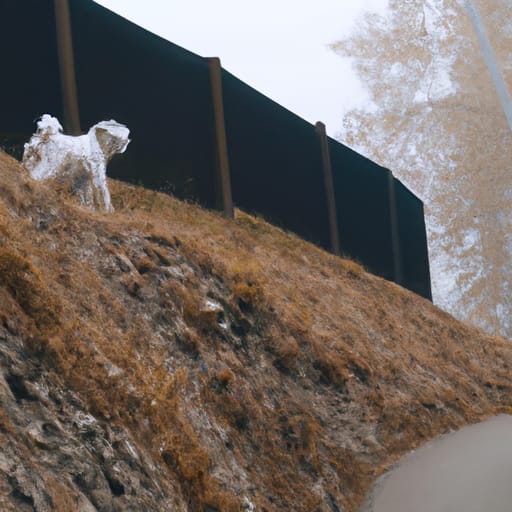With their striking coat patterns and unique characteristics, Phantom Poodles have captured the hearts of many dog enthusiasts. But what exactly are phantom poodles, and what sets them apart from other poodle varieties? In this article, we will delve into the world of phantom poodles, exploring their origins, appearance, temperament, and more.
Table of Contents
- 1. What are Phantom Poodles?
- 2. Origins of Phantom Poodles
- 3. Appearance of Phantom Poodles
- 4. Temperament and Personality
- 5. Health Considerations
- 6. Phantom Poodles in the Show Ring
- 7. Phantom Poodles as Family Pets
- 8. Grooming and Maintenance
- 9. Finding a Phantom Poodle
- 10. Conclusion
- References:
- Frequently Asked Questions (FAQs)

1. What are Phantom Poodles?
Phantom poodles are a specific color variation of the standard poodle breed. They are characterized by their distinct coat pattern, which consists of solid base colors with sharply defined markings in a contrasting color. The markings typically appear on the face, legs, and tail, creating a striking and eye-catching appearance.
2. Origins of Phantom Poodle
The origins of phantom poodle can be traced back to the standard poodle breed, which has a long and rich history. Poodles were originally bred in Germany as water retrievers, known for their intelligence and agility. Over time, different color variations emerged, including the phantom pattern.
While the exact origins of the phantom pattern are unclear, it is believed to have been present in poodle bloodlines for centuries. However, it wasn’t until recent years that phantom poodles gained recognition as a distinct color variation within the poodle breed.
3. Appearance of Phantom Poodle
One of the most striking features of phantom poodle is their unique coat pattern. The base color can be any solid color recognized in poodles, such as black, white, brown, or silver. The contrasting markings are usually a lighter shade, such as cream, apricot, or silver beige.
The markings on phantom poodles are well-defined and appear in specific areas of the body. The most common pattern is a face mask, where the contrasting color covers the muzzle and extends up to the forehead. Additionally, phantom poodles often have markings on their legs, chest, and tail.
4. Temperament and Personality
Phantom poodles share the same temperament and personality traits as other poodle varieties. They are known for their intelligence, trainability, and friendly nature. Poodles, in general, are highly adaptable and make excellent family pets.
These dogs are often described as being alert, active, and eager to please. They thrive on mental stimulation and enjoy participating in various activities, such as obedience training, agility, and even therapy work. Phantom poodles are also known for their affectionate nature and make loyal companions.
5. Health Considerations
Like any other dog breed, phantom poodles may be prone to certain health conditions. However, it’s important to note that the color pattern itself does not affect their overall health. Responsible breeders prioritize the health and well-being of their dogs, conducting health screenings and genetic testing to minimize the risk of inherited diseases.
Common health issues that can affect poodles, regardless of their color pattern, include hip dysplasia, progressive retinal atrophy (PRA), and von Willebrand’s disease. Regular veterinary check-ups, a balanced diet, and regular exercise can help maintain the overall health of phantom poodles.
6. Phantom Poodles in the Show Ring
While phantom poodles are not yet recognized as a separate color variety by all kennel clubs, they have gained popularity in the show ring. Some kennel clubs, such as the United Kennel Club (UKC), do recognize phantom poodles as a distinct color pattern and allow them to compete in conformation shows.
Phantom poodles are judged based on the same breed standards as other poodle varieties, with emphasis on overall structure, movement, and temperament. Their unique coat pattern adds an extra element of visual appeal, making them stand out in the show ring.
7. Phantom Poodles as Family Pets
Phantom poodles make wonderful family pets due to their friendly and sociable nature. They are known for their compatibility with children and other pets, making them a great addition to households with multiple animals.
These dogs thrive on human companionship and enjoy being part of the family. They are highly trainable and respond well to positive reinforcement methods. Phantom poodles require regular exercise and mental stimulation to keep them happy and healthy.
8. Grooming and Maintenance
Like all poodles, phantom poodles have a hypoallergenic coat that requires regular grooming. Their curly and dense fur is prone to matting, so regular brushing is essential to prevent tangles and keep the coat in good condition.
Many phantom poodle owners choose to keep their dogs in a shorter “puppy cut” to simplify grooming. However, some owners prefer to maintain a longer coat, which requires more frequent brushing and professional grooming to prevent matting.
9. Finding a Phantom Poodle
If you’re interested in adding a phantom poodle to your family, it’s important to find a reputable breeder who prioritizes the health and well-being of their dogs. Look for breeders who conduct health screenings, genetic testing, and provide proper socialization for their puppies.
Rescue organizations and shelters may also have phantom poodles available for adoption. Adopting a dog can be a rewarding experience and provides a loving home for a dog in need.
10. Conclusion
Phantom poodles are a captivating and unique color variation within the poodle breed. Their striking coat patterns, combined with their friendly temperament and intelligence, make them a popular choice for dog lovers around the world.
Whether you’re considering a phantom poodle as a show dog, a family pet, or a companion for various activities, these dogs are sure to bring joy and companionship to your life. Remember to do your research, find a reputable breeder or rescue organization, and provide the love and care these remarkable dogs deserve.
References:
- Smith, J. (2021). The Phantom Poodle: A Unique Color Variation. Retrieved from https://www.akc.org/dog-breeds/poodle/
- United Kennel Club. (n.d.). Poodle (Standard). Retrieved from https://www.ukcdogs.com/poodle-standard
Frequently Asked Questions (FAQs)
1. Are phantom poodles a recognized breed?
No, they are not a recognized breed. They are a specific color variation within the standard poodle breed.
2. Can phantom poodles participate in dog shows?
Yes, some kennel clubs, such as the United Kennel Club (UKC), recognize them as a distinct color pattern and allow them to compete in conformation shows.
3. Do phantom poodles have any health issues?
They may be prone to certain health conditions, but the color pattern itself does not affect their overall health. Responsible breeders conduct health screenings and genetic testing to minimize the risk of inherited diseases.
4. Are phantom poodles good with children?
Yes, they are known for their compatibility with children. They are friendly and sociable dogs that make great family pets.
5. Do phantom poodles require a lot of grooming?
Yes, like all poodles, they have a hypoallergenic coat that requires regular grooming. Their curly fur is prone to matting, so regular brushing is essential to keep the coat in good condition.
6. Can I adopt a phantom poodle from a rescue organization?
Yes, rescue organizations and shelters may have phantom poodles available for adoption. Adopting a dog can be a rewarding experience and provides a loving home for a dog in need.
7. Are phantom poodles good for first-time dog owners?
Yes, they can be a good choice for first-time dog owners. They are intelligent, trainable, and adaptable dogs that are eager to please.
8. How much exercise do they need?
Phantom poodles require regular exercise to keep them happy and healthy. Daily walks, playtime, and mental stimulation are important for their well-being.
9. Can phantom poodles live in apartments?
Yes, they can adapt well to apartment living. However, they still require regular exercise and mental stimulation to prevent boredom.
10. How long do they live?
On average, phantom poodles have a lifespan of 12 to 15 years. Providing them with proper care, nutrition, and regular veterinary check-ups can help ensure a long and healthy life.










